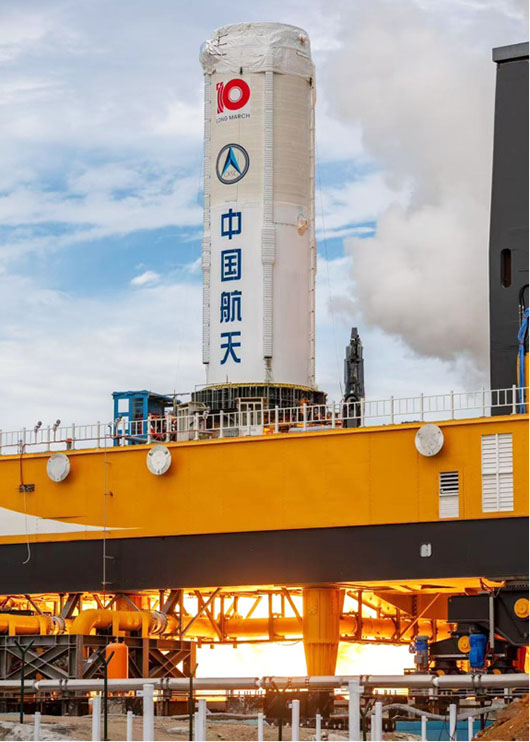Special to CosmicTribune.com, August 20, 2025
By Richard Fisher
On its new specially-built launch platform at the Wencheng Satellite Launch Center on Hainan Island, on Aug. 15, 2024 the China Aerospace Science and Technology Corporation (CASC) conducted the first successful static test of the first stage of the Long March-10 (LM-10) space launch vehicle (SLV) that is scheduled to take Chinese astronauts to the Moon on or before 2030.

This was a “static” test, meaning that the first stage was bolted onto a test platform so that it did not fly away, instead demonstrating that the LM-10 first stage could fire all of its seven of its YF-100K engines, producing 892.2 tonnes of thrust.
According to the China Manned Space Agency (CMSA) it set “a new domestic record for the most powerful engine ignition test,” as noted in an Aug. 16 report in state media China Daily.
State media Global Times added, “This static fire test evaluated the simultaneous working capacity of the seven parallel engines of the rocket’s first stage under standard and high working conditions, as well as obtained complete test data. The test was a complete success, the agency said.”
Likely in development since the early 2000s, the Long March-10 has had several previous designations, including the Long March-5DY, Long March-5G, Long March-5H, before gaining its current designation Long March-10 in 2023.
So far it is to be built in two versions; the “Long March-10” will be a cargo and man-rated tri-core SLV using a total of 21 YF-100K engines, capable of launching about 27 tonnes of cargo to the Moon.
Two LM-10s will be needed for a Chinese Moon mission, one to put the “Lanyue” Moon landing vehicle into lunar orbit some time before a second LM-10 takes three Chinese astronauts in a “Mengzhou” manned spacecraft, to dock with Lanyue and then take two astronauts to the lunar surface.
Full Text . . . . Current Edition . . . . Subscription Information

You must be logged in to post a comment Login